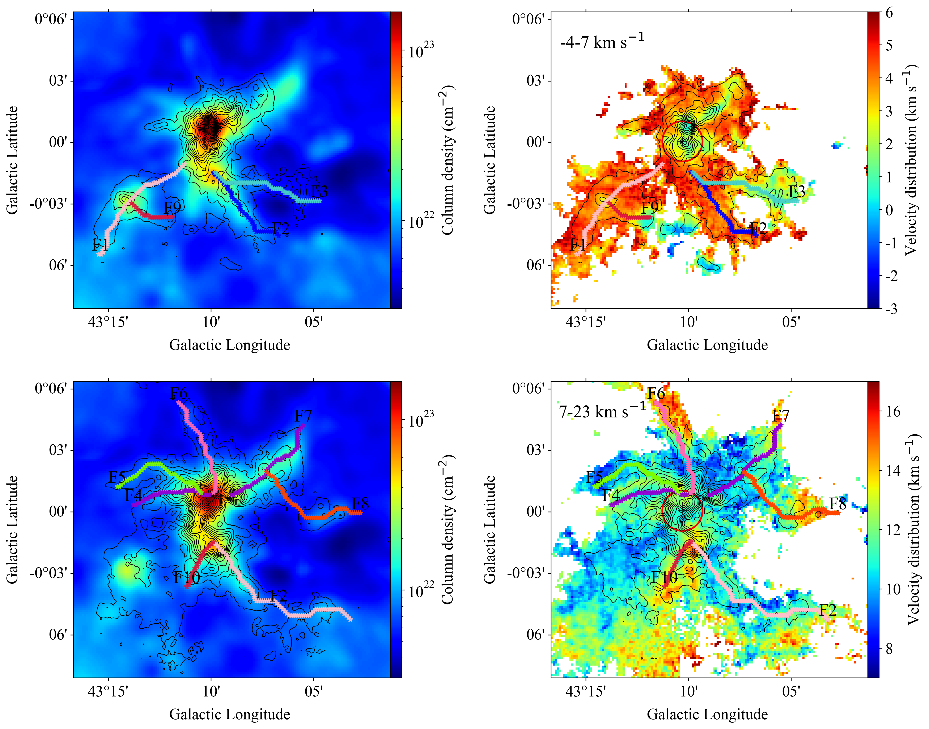Recently, ZHANG Wenjun, a PhD student from the Star Formation and Evolution Group at the Xinjiang Astronomical Observatory (CAS), conducted a study on the gas structure, kinematics, and star formation of the massive star-forming region W49A in the Milky Way.
Using multi-wavelength data from the Herschel Space Telescope, Spitzer Space Telescope, and James Clerk Maxwell Telescope, the researchers found that the giant molecular cloud W49A is composed of two hub-filament systems (HFSs), with material transport from the filamentary structures to the hub facilitating the formation of massive stars. These discoveries highlight the critical role of HFSs in shaping the star formation history of W49A.
The results have been published in the journal Astronomy & Astrophysics.
W49A is a prominent giant molecular cloud in the Milky Way and one of the brightest ionized hydrogen regions in our galaxy. It hosts numerous young stars and exhibits mini starburst activities, making it an active region for massive star formation. While previous studies have focused on star formation activities in W49A, debates continue regarding the relationship between the two velocity components in the molecular cloud and the causes of the starburst activities.
In this study, the researchers analyzed the structure and kinematic properties of the W49A molecular cloud using multi-wavelength data. They discovered that W49A primarily consists of a blue-shifted HFS (with a systemic velocity of about 4 ) and a red-shifted HFS (with a systemic velocity of about 12 ). The gas velocity gradients within both HFSs indicate that gas is being transported to the hub through the filaments. The motion of gas around dense clumps in the hub shows characteristics of accelerated gravitational collapse, providing observational evidence of the crucial role of HFSs in star formation in W49A. Furthermore, based on the kinematic analysis of gas in W49A, the researchers propose that the mini starburst activities may be caused by the collision of the two HFSs at the hub.
The research was supported by the National Key Research and Development Program and the National Natural Science Foundation of China’s General Program, among other scientific projects.

Distribution of the W49A molecular cloud and two hub-filament systems